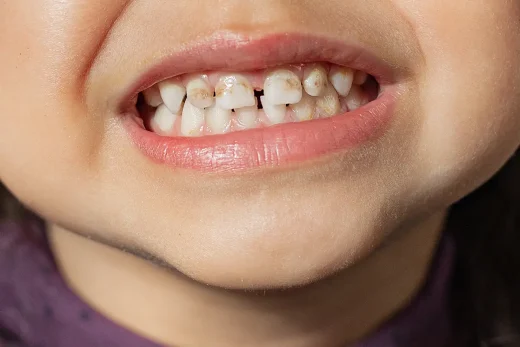Cavity or tooth decay is the breakdown of teeth due to acids produced by bacteria. It is something that most of people experienced. The pain about the tooth decay is something variable. It depends on the location or the severity of the tooth decay wether it may feel mild or even no pain. In early cases a great deal of patients do not even realize that they had a tooth decay not before the regularly dental exam.
So, why do you get tooth decay or can a badly decayed tooth can be saved? Here are the main reasons:
Plaque Bacteria and Acids Causes Tooth Decay
Plaque bacteria and acids are the big enemies of the tooth enamel. That is the one of the causes of tooth enamel erosion. Although there is good bacteria in the mouth this bacteria causes dental caries. So this can lead to a hole in tooth which may need cavity filling.
Poor Oral Hygiene and Tooth Decay

Oral Hygiene is actually the most important step for healthy teeth. Brushing your teeth will prevent the plaque sat on teeth and there will not occur the problem of rotten teeth.
Nourishment and Beverages
Carbohydrates, sugary foods, acidic drink are the way which leads to tooth cavity. These types of nourishment and beverages are also the answer for the question “Does rotten teeth cause bad breath?”. Tooth decay and bad breath are generally connected.
Dry Mouth
Saliva is responsible for a range of processes in the mouth, including plaque removal. Dry mouth (lack of normal saliva) gives the ideal environment for bacteria and tooth decay to thrive.
Stomach Acid
Due to stomach acid interacting with the teeth and eroding the enamel, patients who suffer from persistent heartburn or vomit regularly may develop dental decay. This is why bulimia sufferers have a higher risk of tooth decay.
Enamel on teeth is irreplaceable, so it’s critical to look after it. Fortunately, by knowing the aspects that may make you more prone to cavities, you may take the necessary precautions to stomach acid.
Types of Tooth Decay
There is general three different types of cavities. They are as follows:
- Root cavities
- Pit and fissure cavities
- Smooth-surface cavities
Root Cavities
Taking place on the surface of a enamel’s roots, root cavities are more not unusual in older adults, specifically seniors, who much more likely to have gum disorders such as receding gums. while gums recede, the tissue around the enamel is a lot lower at the teeth and the root surfaces come to be exposed which leaves them greater susceptible to erosive acids from one’s diet, bacteria, and rot. For tooth decay treatment for root cavities, dentists begin by removing any tooth cavity and then fill the hole with a filling.
Pit and fissure cavities
Commonly found on the rear molars, those varieties of cavities occur on the chewing surfaces of teeth. because it’s easy for plaque and food to get stuck inside the crevices and grooves on the tops of enamel, pit and fissure cavities are pretty commonplace, mainly for individuals who don’t brush as frequently as they need to. In some instances, sealants can be used to assist defend enamel in kids and adults who are at a higher danger of developing pit and fissure cavities.
Smooth-surface cavities
Usually happening at the teeth existed on the sides of the mouth, clean-floor cavities have an effect on the flat surface of teeth. they may be the slowest of the cavities to develop and also the least not unusual. even though they aren’t as common, these forms of cavities may be a trouble for individuals who don’t practice suitable dental hygiene.
More information about tooth decay and other dental problems, please visit our website and fill out the contact form.